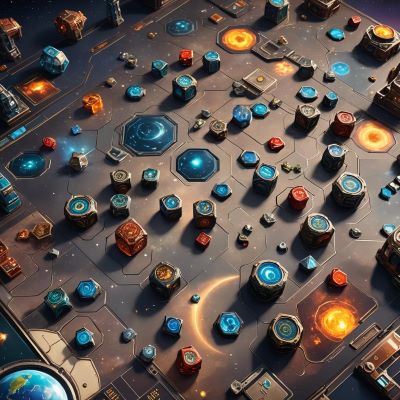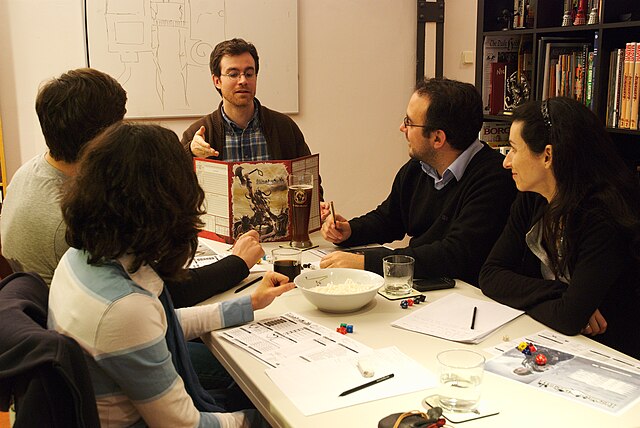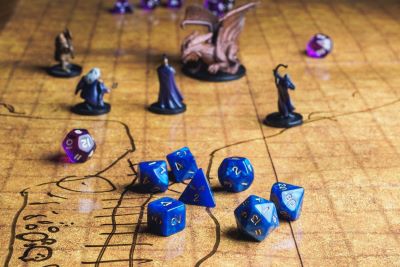Tabletop gaming is extremely varied. Within this genre exists a diverse array of experiences that deeply engage players, fostering cognitive growth, stress reduction, skill development, and community building. In this article I explore the benefits of a high engagement game. Before we delve into how they’re utilized in military training and the implications for leadership development.
What is a High Engagement Game
First off, what is this concept that we’re discussing? A high engagement game is a type of game that deeply immerses and captivates players, fostering intense involvement and interaction throughout the gaming experience. Unlike more casual or passive forms of entertainment, high engagement games demand significant mental and emotional investment from players. They do so by drawing them into richly detailed worlds, complex challenges, and compelling narratives.
Key Characteristics
- Complexity: High engagement games often feature intricate gameplay mechanics, multifaceted storylines, and expansive game worlds. Players are presented with a wide array of choices, challenges, and opportunities for exploration. Consequently, requiring them to employ strategic thinking and problem-solving skills.
- Emotional Resonance: These games evoke strong emotional responses from players, ranging from excitement and anticipation to empathy and sorrow. Therefore, through immersive storytelling, well-developed characters, and impactful gameplay moments, high engagement games resonate on a deep emotional level. Helping forge powerful connections between players and the game world.
- Interactivity: Interactivity is a hallmark of high engagement games. Pushing players to actively shape the course of the game through their decisions, actions, and interactions with the game environment and other players. Whether navigating branching storylines in a roleplaying game or engaging in strategic battles in a board game, players play a central role in driving the game forward.
- Longevity: High engagement games often offer extensive gameplay experiences that unfold over hours, days, or even weeks. Whether through ongoing campaigns, or multiplayer matches, these games provide players with sustained engagement and long-term enjoyment.
Ultimately, high engagement games provide players with deeply rewarding and immersive experiences that go beyond mere entertainment. Playing encourages fostering personal growth, social connection, and a sense of accomplishment. Whether exploring fantastical realms in a roleplaying adventure, strategizing in a board game showdown, or commanding armies in a wargame, players are drawn into a world of endless possibilities and unforgettable experiences.
Examples You Can Play Now
The definition of a high engagement game makes them sound pretty intense. And they can be. But there are some great examples that are being played all over the world right now. Three games to consider include the following, based on the criteria above.

Dungeons & Dragons (D&D)
Of course, this game needs no introduction as the worlds most popular roleplaying game.
- Complexity: D&D is renowned for its intricate ruleset, expansive world-building, and limitless storytelling potential. Players create characters with unique abilities, embark on epic quests, and navigate a dynamic fantasy universe filled with danger and intrigue.
- Emotional Resonance: Through immersive storytelling and roleplaying, D&D elicits a wide range of emotions. From exhilaration during epic battles to empathy for well-developed characters. Players become deeply invested in their characters’ journeys and forge strong emotional connections with their fellow adventurers.
- Interactivity: D&D is highly interactive, with players collaboratively shaping the narrative through their decisions and actions. The Dungeon Master (DM) serves as both storyteller and referee, adapting the game world in response to player choices and creating memorable experiences tailored to each group.
- Longevity: With its modular ruleset, endless customization options, and vast library of official and user-generated content, D&D offers virtually limitless replay value. Players can embark on epic campaigns that span months or even years. Exploring new realms, facing formidable foes, and forging lasting friendships along the way.
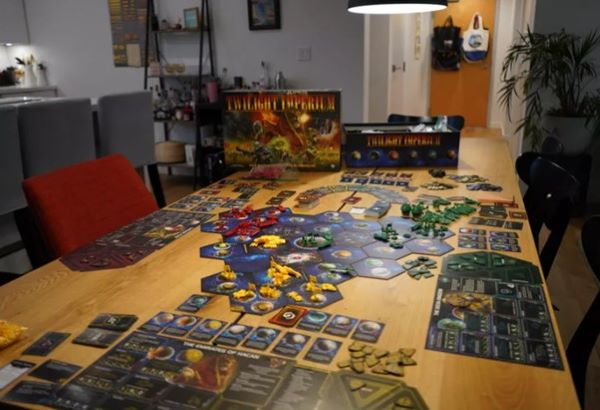
Twilight Imperium (Fourth Edition)
This board game has been in production for over twenty years and for good reason. Complex with elements of grand strategy, wargaming, diplomacy and negotiation, Twilight Imperium is a truly intricate game with multiple win conditions.
- Complexity: Twilight Imperium is a grand strategy board game set in a sprawling sci-fi universe. Players vie for control of the galaxy through diplomacy, warfare, and resource management. With its intricate ruleset, diverse factions, and dynamic gameplay, Twilight Imperium offers a deeply strategic and immersive experience.
- Emotional Resonance: The epic scope and high-stakes gameplay of Twilight Imperium evoke a sense of grandeur and excitement. Players must navigate shifting alliances, engage in epic space battles, and vie for dominance over the galaxy. Moments of triumph and betrayal are common, fostering strong emotional connections between players and the game.
- Interactivity: Twilight Imperium encourages diplomacy, negotiation, and strategic planning, as players seek to outmaneuver their rivals and achieve their objectives. The game’s political system allows players to influence the course of the game through voting and alliances, adding layers of depth and complexity.
- Longevity: With its epic gameplay sessions lasting anywhere from six to twelve hours or more, Twilight Imperium offers a substantial and immersive gaming experience. Each playthrough is unique, thanks to the game’s variable setup, modular board, and diverse range of player strategies and interactions.
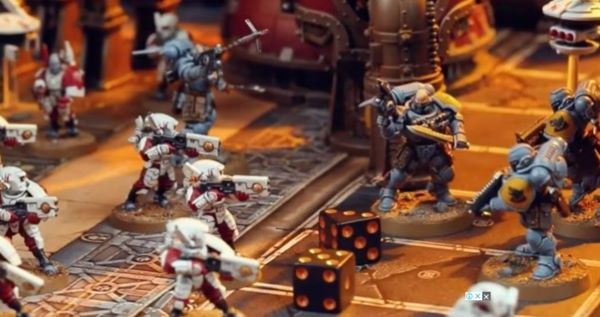
Warhammer 40,000: Kill Team
While played at a smaller scale Kill Team is still full of high engagement.
- Complexity: Kill Team is a skirmish-level wargame set in the dystopian universe of Warhammer 40,000. Players command small squads of elite warriors in fast-paced tactical battles. With its detailed ruleset, customizable squads, and dynamic battlefield environments, Kill Team offers a richly strategic and immersive gameplay experience.
- Emotional Resonance: The intense, high-stakes nature of Kill Team elicits a range of emotions. Ranging from adrenaline-pumping excitement during combat to tension and anticipation as players vie for victory. Players become deeply invested in the fate of their squads and forge strong narratives around their battles and characters.
- Interactivity: Kill Team emphasizes tactical maneuvering, positioning, and decision-making, as players strive to outwit and outmaneuver their opponents. The game’s dynamic scenarios and mission objectives create opportunities for varied and engaging gameplay experiences, keeping players on their toes and fostering strategic thinking.
- Longevity: With its modular ruleset, diverse factions, and ever-expanding range of miniatures and supplements, Kill Team offers endless possibilities for customization and replayability. Players can experiment with different squad compositions, strategies, and tactics, ensuring that no two battles are ever the same.
These three tabletop games offer deeply engaging and immersive experiences that cater to a wide range of interests and playstyles. We are only scratching the surface. Mega Games take this to a whole new level and will be the subject of a separate article.
You can read about my attempt at creating a high engagement skirmish game (similar to Warhammer 40,000 Kill Team) in my past article on the subject.
A Military Context for the High Engagement Game
High engagement wargaming refers to a form of tabletop gaming that deeply immerses players in strategic military simulations. Once again, fostering intense involvement and interaction throughout the gaming experience. Unlike more casual or traditional wargames, high engagement wargaming emphasizes complex scenarios, realistic tactics, and immersive storytelling. Drawing players into dynamic and challenging conflicts that require strategic thinking, decision-making, and teamwork to overcome.
Key Characteristics
The main facets of high engagement wargaming include:
- Realism and Authenticity: High engagement wargames strive to accurately simulate real-world military scenarios. Often incorporating detailed rulesets, historical accuracy, and realistic mechanics. Players are presented with complex tactical challenges that mirror the complexities of actual warfare. Requiring them to devise strategies, coordinate maneuvers, and adapt to changing circumstances on the battlefield.
- Immersion and Narrative Depth: Through immersive storytelling and dynamic gameplay, high engagement wargames create richly detailed narratives that draw players into the heat of battle. Consequently, whether commanding armies in historic conflicts or leading futuristic campaigns, players become deeply invested in the unfolding story of the game. Leading to forging emotional connections with their forces and adversaries.
- Strategic Depth and Complexity: High engagement wargames offer deep strategic gameplay. Players are challenged to think critically, plan strategically, and anticipate their opponent’s moves. From managing logistics and coordinating troop movements to conducting reconnaissance and exploiting terrain features, players must master a wide range of tactical skills to achieve victory on the battlefield.
- Player Agency and Interaction: Wargames of this type prioritize player agency and interaction. As such, participants shape the course of the game through their decisions, actions, and interactions with the game environment and other players. Whether negotiating alliances, coordinating joint operations, or engaging in fierce battles, players play an active role in determining the outcome.
- Long-Term Engagement and Replayability: With their deep strategic gameplay, rich narrative depth, and endless customization options, high engagement wargames offer substantial replay value and long-term engagement. Players can embark on epic campaigns that span multiple sessions, exploring new strategies, encountering new challenges, and forging new narratives with each playthrough.
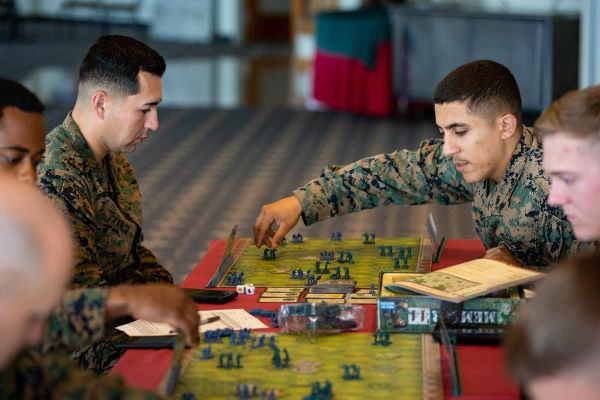
Why Use Games in the Military
Overall, high engagement wargaming provides players with immersive and rewarding experiences that go beyond mere entertainment, fostering strategic thinking, historical understanding, and camaraderie among participants. Whether recreating historic battles, or exploring hypothetical conflicts, players are drawn into a world of endless possibilities and unforgettable experiences.
Gaming of this style is used in military academies in Australia, USA, UK and other countries to test their junior officers in the chaos and strategies of conflict. For more information on this type of game check out the paper “Why Wargaming Works” by Peter Perla and ED McGrady. If it works for military officers why cant it be applied to civilian leaders too?
The Benefits of Playing a High Engagement Game
Putting the military context to one side, there are significant benefits to be gained from playing a high engagement game. These include:
- Enhanced Cognitive Abilities: Tabletop games demand strategic thinking, problem-solving, and quick decision-making. Players immerse themselves in complex scenarios, honing cognitive skills like memory, attention, and spatial reasoning.
- Stress Reduction: Engaging in tabletop games provides a therapeutic escape from daily pressures. Whether embarking on a grand adventure in a roleplaying game or strategizing in a board game, players find solace and relaxation in these immersive experiences.
- Skill Development: From negotiation and resource management in board games to improvisation and teamwork in roleplaying games, tabletop experiences offer diverse avenues for skill development. Players refine a range of abilities, from communication to critical thinking.
- Community Building: Tabletop gaming fosters connections and camaraderie among players. Whether gathered around a table for a board game night or collaborating in a roleplaying campaign, participants form lasting bonds and build supportive communities.
These benefits apply to playing these games in any context. However, imagine harnessing this experience to teach leadership or other soft skills needed in the workplace.
Using High Engagement Games for Leadership Development
I hope you can see that these games have a huge amount of potential that extends beyond the enjoyment of playing. High engagement games provide a fertile ground for cultivating leadership qualities in diverse settings. Players can assume leadership roles, making crucial decisions, managing resources, and inspiring their comrades. Other development opportunities include negotiating alliances, formulating strategies, and leading their factions to victory. By navigating complex challenges and collaborating with teammates, players hone their decision-making abilities and learn to inspire trust and cooperation.
Creating or using games of this nature can be a valuable tool when training and inspiring new leaders. Why not take inspiration from the military and run a high engagement game for your future leaders cohort giving them a taste of the different facets that make a successful leader.

